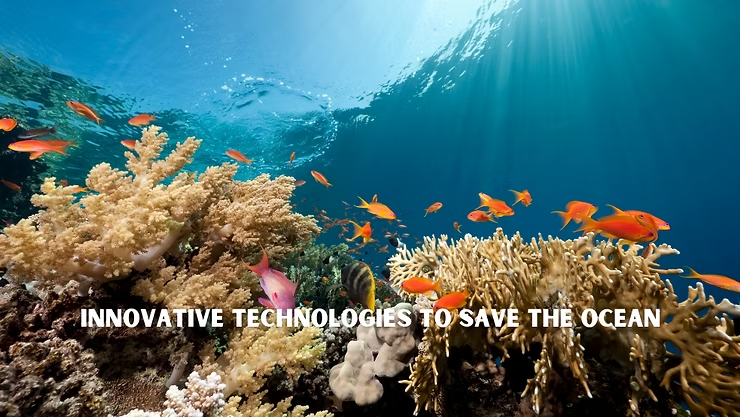Overview
The Importance of Saving the Ocean
The ocean is a vital ecosystem that sustains diverse marine life and regulates Earth’s climate. It provides oxygen, supports countless species, and offers critical resources for humanity. However, threats such as overfishing, pollution, and climate change are placing this delicate balance at risk. Without urgent action, we risk losing biodiversity and the essential services oceans provide. Embracing innovative technologies is key to safeguarding our oceans for future generations.
Current Threats to the Ocean
Today, our oceans face a range of serious threats:
- Pollution: Plastic and chemical waste harm marine life and ecosystems.
- Overfishing: Unsustainable practices deplete fish populations and disrupt ecosystems.
- Habitat destruction: Coral bleaching and coastal development eliminate vital marine habitats.
- Climate change: Rising temperatures, acidification, and sea level rise further stress marine life.
Addressing these issues requires innovation and global commitment.
The Need for Innovative Technologies
Technologies can help monitor, protect, and restore ocean health. Tools like satellite tracking, underwater drones, and bioacoustic monitoring provide valuable data about marine ecosystems. Cleanup systems, plastic-eating bacteria, and smart trash collection reduce pollution, while carbon capture, alkalinity enhancement, and seaweed cultivation combat acidification. Innovation is essential to reversing damage and ensuring resilience.
Technologies to Monitor and Protect Marine Life
Satellite Tracking Systems
Satellite tracking acts like GPS for marine animals, revealing migration routes, feeding grounds, and population data. This information helps identify critical habitats and informs conservation strategies.
Underwater Drones
Equipped with cameras and sensors, underwater drones explore the deep sea, map the ocean floor, and study marine species. They also collect samples, expanding research possibilities without human risk.
Bioacoustic Monitoring
This technology listens to marine sounds to monitor species presence and ecosystem health. By analyzing calls and patterns, scientists can track endangered animals and detect changes caused by human activity.
Technologies to Clean Up Ocean Pollution
Ocean Cleanup Arrays
Floating barriers collect plastic debris by harnessing ocean currents. This method concentrates waste for removal and recycling, reducing harm to marine ecosystems.
Plastic-Eating Bacteria
Special microbes break down plastics into smaller, biodegradable components. These natural allies provide a sustainable solution to reducing plastic pollution.
Smart Trash Collection Systems
Using sensors and AI, these systems identify, sort, and collect waste efficiently. They streamline recycling, reduce errors, and provide insights into pollution hotspots.
Technologies to Reduce Ocean Acidification
Carbon Capture and Storage
CCS prevents CO2 from entering the atmosphere by capturing emissions and storing them underground, helping reduce acidification and protecting marine ecosystems.
Alkalinity Enhancement
Adding alkaline substances like lime or olivine to the ocean neutralizes acidity, helping restore balance to marine ecosystems.
Seaweed Cultivation
Seaweed absorbs CO2, reducing ocean acidity while offering sustainable products such as food, biofuel, and eco-packaging. Large-scale cultivation benefits both environment and communities.
Conclusion
The Role of Technology in Saving the Ocean
Technology provides innovative solutions to monitor marine ecosystems, clean up pollution, and combat acidification. These advances are critical to restoring ocean health and building resilience.
Collaboration and Innovation for a Sustainable Future
Scientists, policymakers, and communities must collaborate to expand research, share resources, and implement technologies that protect marine life. Collective action drives progress toward sustainability.
Taking Action to Protect Our Oceans
Beyond technology, individuals can contribute by reducing waste, supporting sustainable fishing, and joining conservation initiatives. Together, we can create a healthier ocean for generations to come.
Save Our Blue Ocean is dedicated to protecting marine ecosystems. Our bracelets, inspired by turtles, sharks, and whales, raise awareness and support conservation. By choosing a Save Ocean bracelet, you contribute to ocean preservation. Visit Save Our Blue Ocean | Ocean Gift Malaysia to explore our collection and join the movement.

